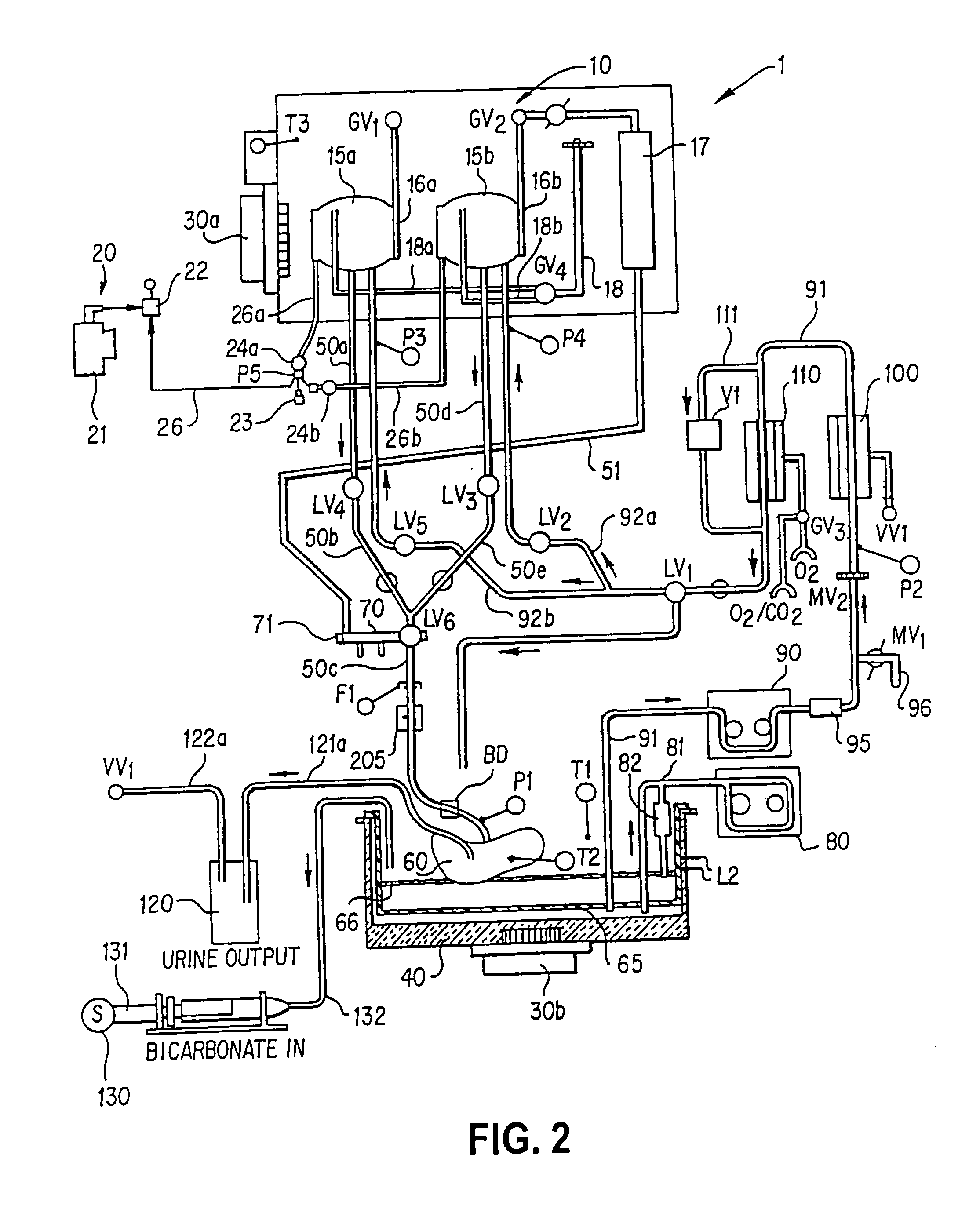Method for perfusing an organ and for isolating cells from the organ
a technology for isolating cells and organs, applied in the field of perfusing organs and isolating cells from organs, can solve the problems of increasing the risk of organ overpressurization, damage to organ tissue, and vascular endothelial lining of organs, so as to monitor, sustain and/or restore the viability of organs, and avoid damage to organs.
- Summary
- Abstract
- Description
- Claims
- Application Information
AI Technical Summary
Benefits of technology
Problems solved by technology
Method used
Image
Examples
Embodiment Construction
[0061]For a general understanding of the features of the invention, reference is made to the drawings. In the drawings, like reference numerals have been used throughout to designate like elements.
[0062]FIG. 1 shows an organ perfusion apparatus 1 according to the invention. FIG. 2 is a schematic illustration of the apparatus of FIG. 1. The apparatus 1 is preferably at least partially microprocessor controlled, and pneumatically actuated. The microprocessor 150 connection to the sensors, valves, thermoelectric units and pumps of the apparatus 1 is schematically shown in FIG. 3. Microprocessor 150 and apparatus 1 may be configured to and are preferably capable of further being connected to a computer network to provide data sharing, for example across a local area network or across the Internet.
[0063]The organ perfusion apparatus 1 is capable of perfusing one or more organs simultaneously, at both normothermic and hypothermic temperatures (hereinafter, normothermic and hypothermic per...
PUM
 Login to View More
Login to View More Abstract
Description
Claims
Application Information
 Login to View More
Login to View More - R&D
- Intellectual Property
- Life Sciences
- Materials
- Tech Scout
- Unparalleled Data Quality
- Higher Quality Content
- 60% Fewer Hallucinations
Browse by: Latest US Patents, China's latest patents, Technical Efficacy Thesaurus, Application Domain, Technology Topic, Popular Technical Reports.
© 2025 PatSnap. All rights reserved.Legal|Privacy policy|Modern Slavery Act Transparency Statement|Sitemap|About US| Contact US: help@patsnap.com



